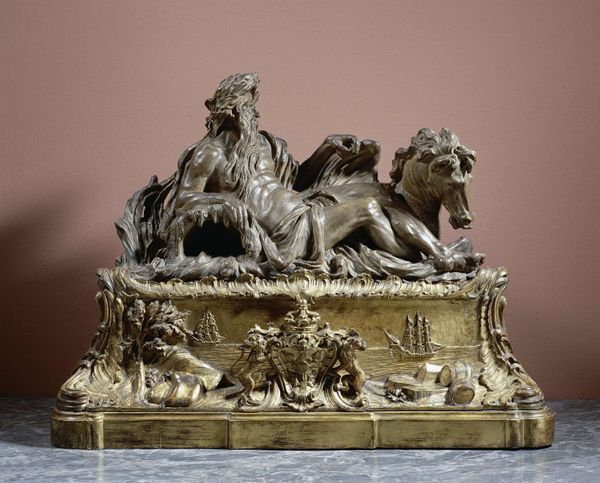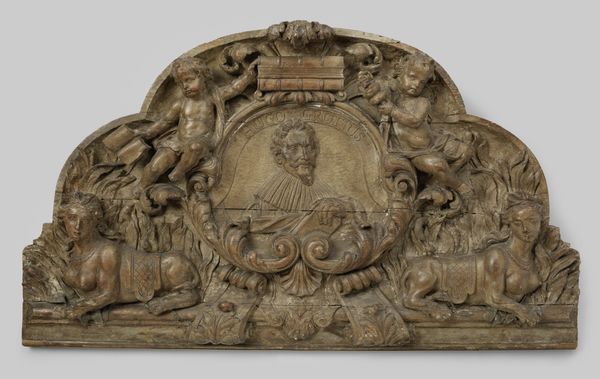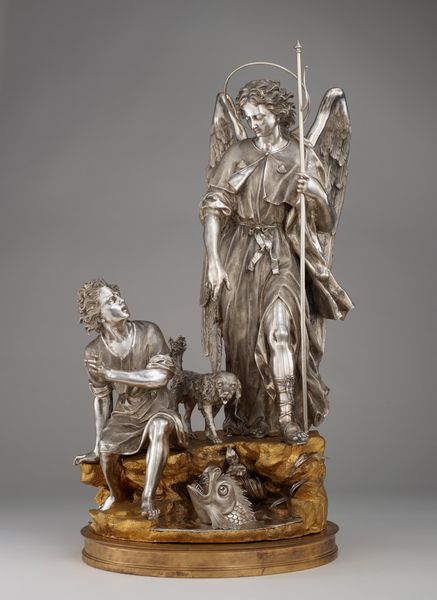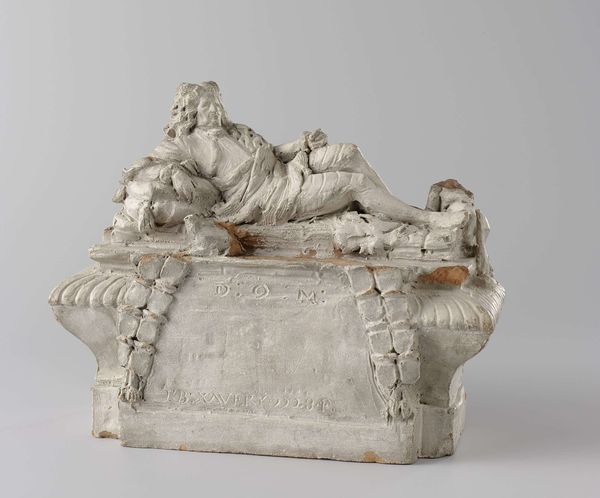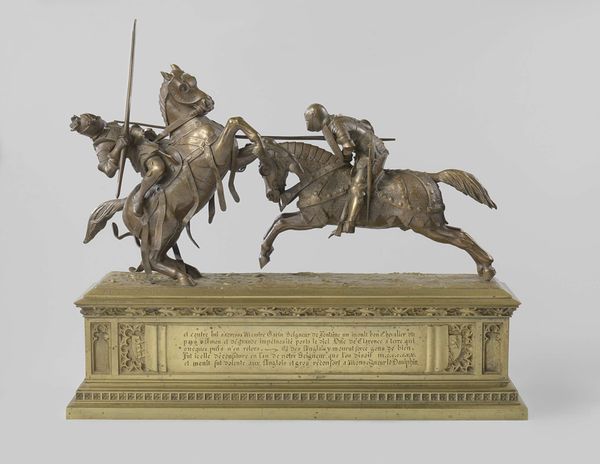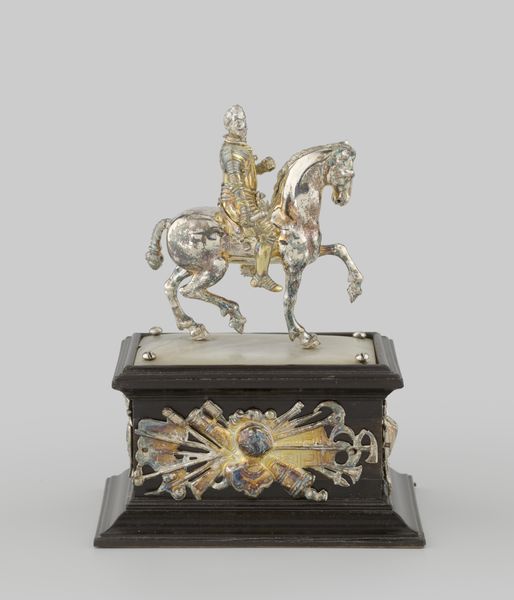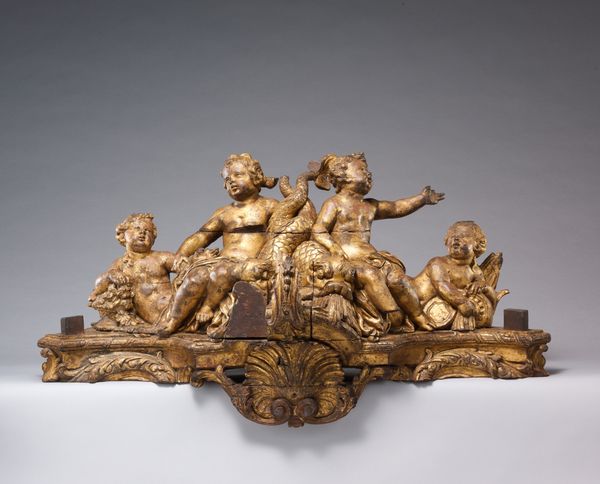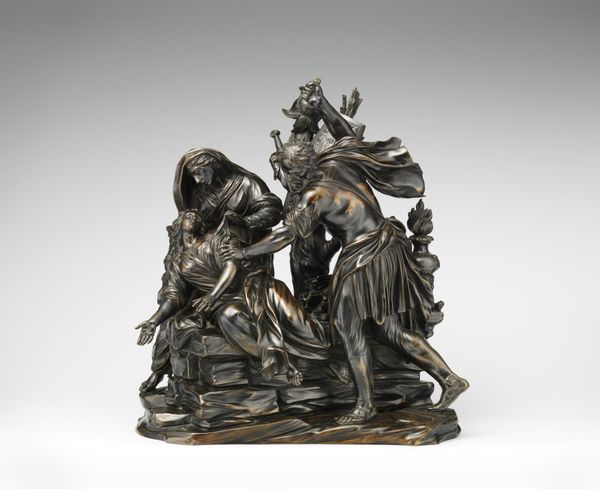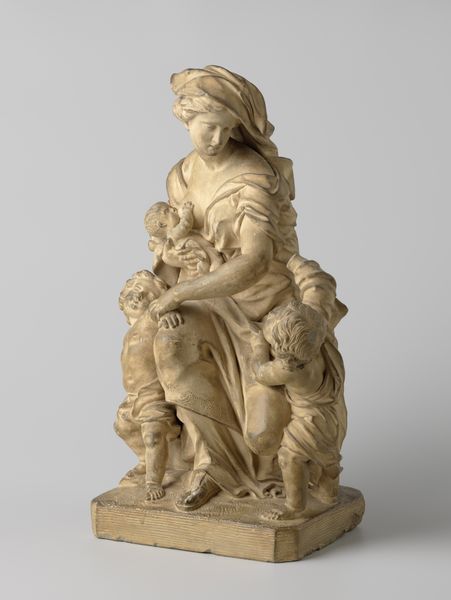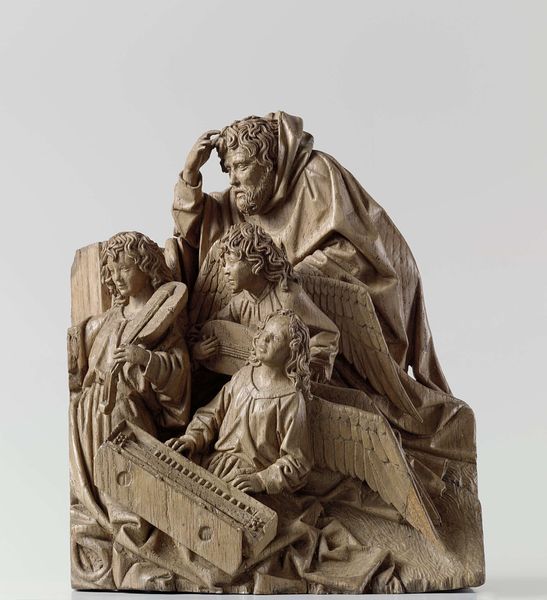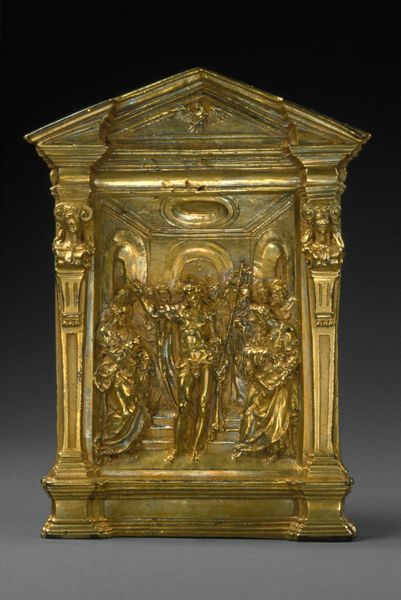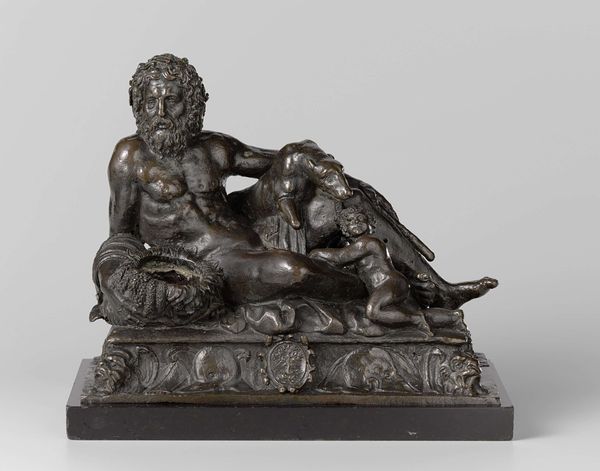
bronze, sculpture
#
baroque
#
stone
#
sculpture
#
bronze
#
figuration
#
geometric
#
sculpture
#
history-painting
Dimensions: height 53.5 cm, width 56 cm
Copyright: Rijks Museum: Open Domain
Editor: This sculpture, titled "Neptune with Seahorse," likely created sometime between 1670 and 1770 by Pieter Xaveri, immediately strikes me with its dynamic Baroque style. What symbolic significance do you see in a sculpture like this? Curator: The enduring appeal of Neptune, god of the sea, stems from his command over both the known and the unknown. Consider the cultural memory embedded within: the sea represents both opportunity and peril, doesn't it? The seahorse itself is a fascinating symbol, often linked to Poseidon, or Neptune in Roman mythology, as creatures of great power. What feelings do you get from this pairing? Editor: I think I find a sense of power and authority conveyed through them both; it makes me think about humanity’s reliance on the sea throughout history. And I can see a few ships on the base of the sculpture... Curator: Precisely. See how Xaveri links the mythological figure to real-world implications of sea travel. That little vignette showing boats suggests a connection between Neptune’s dominion and the voyages of discovery or trade, a potent emblem during the rise of maritime powers in that era. Doesn't the god’s posture strike you? The way that he reclines suggests he's calm and in command? Editor: It does. I can see how all those historical and symbolic layers build an understanding of the artwork that you couldn’t get just by looking. It’s a new way of thinking about classical figures in art. Curator: Exactly. These symbols echo down the ages and continue to resonate in the collective human experience. What a treasure trove of insights!
Comments
No comments
Be the first to comment and join the conversation on the ultimate creative platform.
